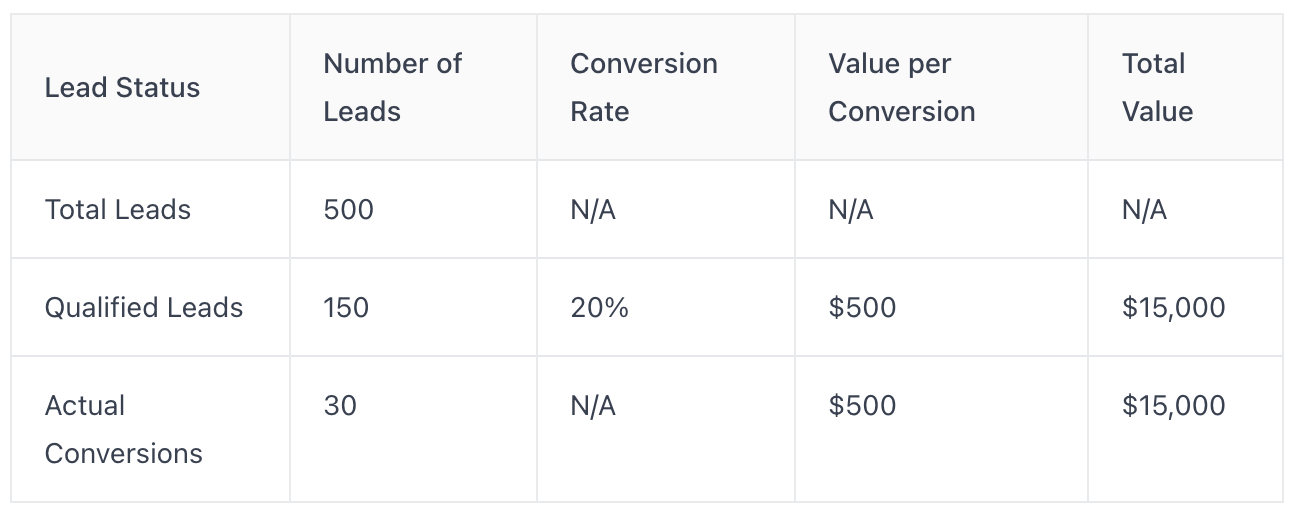Register as an organizer
Click the button below and finish your organizer registration, or fill out the form and we will be in touch to assist you.

Getting sponsors on board for your event is one thing, but keeping them happy and coming back year after year? That's a whole different ballgame. It all comes down to showing them what they got out of it, plain and simple. European organizers, especially, need to be on top of their game with ROI tracking for sponsors. It's not just about getting money; it's about proving that their investment actually paid off. This article will walk you through how to do just that, making sure your sponsors see the real value in partnering with you.

It's easy to get caught up in the excitement of planning an event, but let's not forget the sponsors! To really show them the value they're getting, we need to understand what they're hoping to achieve in the first place. This isn't just about slapping a logo on a banner; it's about creating a partnership that benefits everyone. Understanding sponsor objectives is the first step in proving ROI.
Before you even start thinking about metrics, have a conversation with your sponsors. What are their main goals for being involved in your event? Are they looking to:
Understanding these goals upfront is key. Without this knowledge, you're just guessing at what success looks like for them. It's like trying to hit a target blindfolded. You need to know what they want to achieve to measure if you've actually helped them get there. Think of it as laying the groundwork for a successful partnership. You can also show tangible ROI metrics from past events.
Once you know what your sponsors want, it's time to think about how your event can help them achieve it. This means carefully aligning your event's offerings with their specific needs. For example, if a sponsor wants to generate leads, you might offer them a prominent booth location or the opportunity to host a workshop. If they're focused on brand awareness, you could feature their logo prominently on event materials or give them a speaking slot. It's about making sure their investment translates into real results. Think about it like this: you're not just selling sponsorship packages; you're selling solutions to their business challenges.
Now for the numbers! Not all metrics are created equal. The metrics you track should directly reflect the sponsor's objectives. If they're focused on lead generation, track the number of leads generated, the conversion rate, and the cost per lead. If they're focused on brand awareness, track social media mentions, website traffic, and media coverage. Don't just throw a bunch of numbers at them; give them the data that matters most to their bottom line. It's about showing them, in concrete terms, how your event has helped them achieve their goals.
By tailoring your metrics, you demonstrate that you understand their needs and are committed to helping them succeed. This builds trust and strengthens the relationship, making them more likely to sponsor your event again in the future.

It's all about the leads, right? Sponsors want to see a return on their investment, and for many, that means generating qualified leads. Here's how to show them the money (or, well, the leads that turn into money).
The number of leads is just the starting point. You need to show how many of those leads are actually qualified and how many convert into sales or other desired outcomes. This is where the rubber meets the road. It's not enough to say you got 500 leads; you need to show that 100 of them were genuinely interested prospects who moved further down the sales funnel. Here's a simple table to illustrate:

Booth visits are a key indicator of interest. Track how many people visit a sponsor's booth, how long they stay, and what kind of interactions they have with the booth staff. Are they just grabbing a free pen, or are they engaging in meaningful conversations? Use lead capture tools to gather contact information and qualify those visitors. This data helps sponsors understand the quality of the interactions, not just the quantity. Tools like Brella, Swapcard, and Grip can help track booth visits.
What's the cost to acquire each lead? This is a critical metric for demonstrating ROI. Calculate the total investment made by the sponsor and divide it by the number of qualified leads generated. A lower cost per lead indicates a more efficient and effective sponsorship. For example, if a sponsor invests $5,000 and generates 100 qualified leads, the cost per lead is $50. Compare this to other marketing channels to show the value of event sponsorship. You can showcase tangible ROI metrics of past sponsors, including footfalls of the event and booth visits. A post-event report is a great way to showcase this data.
It's important to remember that lead generation isn't just about quantity; it's about quality. Focus on tracking metrics that demonstrate the value of the leads generated, not just the number of leads collected. This will help you build stronger, longer-lasting relationships with your sponsors.
Here are some ways to improve lead generation:
It's not just about leads; sponsors also want to see how much brand exposure they're getting. Showing them the reach and engagement their brand receives is key to proving value.
Social media is a goldmine for measuring brand exposure. Track the number of mentions, reach, and engagement (likes, shares, comments) related to the sponsor's brand or event-related hashtags. This data shows how much visibility the sponsor received through the event's social media efforts. It's also useful to monitor sentiment – are people talking positively about the sponsor?
If a sponsor has a speaking slot or provides content, track how many people viewed the session or downloaded the content. This shows the sponsor how many people were interested in what they had to say. High view counts and download numbers indicate strong engagement and a valuable opportunity for the sponsor.
It's important to provide context. A high view count is great, but if the average viewing time was only a few seconds, it might not be as valuable as it seems. Consider including metrics like average viewing time or completion rate to give sponsors a more complete picture.
Don't forget about the physical event space! How visible was the sponsor's brand on-site? This can be a bit trickier to measure, but it's still important. Consider these methods:
To really show sponsors the value they're getting, you need the right tools. It's not enough to just guess or rely on gut feelings. You need solid data, and that means using platforms designed to capture and analyze event metrics. Let's explore some options.
These platforms are all about tracking where leads come from. Think of them as your detective, piecing together the lead's journey from initial contact to conversion. They help you see which sponsor activities are actually driving results. For example, you can use these tools to track booth visits, badge scans, and interactions with sponsor content within the event app. Some popular options include Brella, Swapcard, and Grip. Don't forget simpler options like Google Forms or HubSpot Forms for capturing contact info during sponsor-hosted sessions. These tools help with lead attribution.
CRM matchback is where you compare the leads generated at the event with the sponsor's existing customer database. This helps determine the quality of the leads. Are they new potential customers, or are they already in the system? It also helps measure conversion rates. Here's how it works:
CRM matchback is a game-changer because it moves beyond just counting leads to understanding their actual value. It shows sponsors the real impact of their investment.
Don't underestimate the power of direct feedback. Surveys and testimonials provide qualitative data that complements the quantitative metrics. Use tools like SurveyMonkey or Google Forms to gather insights from attendees and sponsors. Ask questions like:
Testimonials, in particular, can be powerful. A quote from a happy sponsor is worth a thousand data points. Make sure to ask sponsors for testimonials after the event, highlighting the specific benefits they received. This is a great way to showcase sponsorship ROI.
It's not enough to just collect data; you need to present it in a way that sponsors understand and appreciate. Post-event reporting is where you transform raw numbers into a compelling narrative of value. Think of it as your final opportunity to solidify the sponsor relationship and set the stage for future collaborations.
Generic reports often miss the mark. Tailor your dashboards and reports to reflect each sponsor's specific objectives. A dashboard should offer a high-level overview, while custom reports can provide granular detail. Consider including interactive elements that allow sponsors to explore the data themselves. For example, a sponsor focused on lead generation might appreciate a dashboard highlighting lead sources, conversion rates, and demographic information.
Data alone can be dry. Weave in success stories to bring the numbers to life. These stories should illustrate how the event helped sponsors achieve their goals. Use concrete metrics to support your claims. For instance, instead of saying "The event increased brand awareness," say "The event increased brand mentions on social media by 40%, reaching an audience of 2 million people."
Transparency is key to building trust. Clearly outline the goals you agreed upon with each sponsor before the event. Then, present the actual outcomes alongside those goals. This allows sponsors to easily see the value they received. If there were any shortfalls, address them directly and explain the reasons why.
It's important to acknowledge that not every event will be a resounding success in every area. Being upfront about challenges and demonstrating a commitment to improvement can actually strengthen sponsor relationships. Use the post-event report as an opportunity to learn and grow together.
Here's an example of how you might present this information in a table:

It's easy to think of sponsorships as one-off transactions, but the real win is turning them into lasting partnerships. Sponsor retention is all about showing sponsors they're getting more than just a logo on a banner. It's about creating a relationship where they see your event as a key part of their ongoing strategy. Let's explore how to make that happen.
Don't just sell sponsors a package; involve them in shaping the event itself. Think about ways they can actively participate, not just passively observe. Can they host a workshop? Lead a panel discussion? The more they contribute, the more invested they become. This ensures alignment with their objectives, whether it’s pipeline influence, brand awareness, or product showcase. This collaborative approach makes them feel like true partners, not just advertisers. For example, you can secure event sponsorship by demonstrating how their support aligns with their objectives.
Why limit sponsor benefits to just the event itself? Extend their reach with pre-event webinars, post-event content, or even branded surveys. Think of your event as a platform, not just a date on the calendar. This keeps their brand visible and engaged with your audience throughout the year, boosting their return on investment and solidifying their commitment to your event.
Reward sponsors who stick around. Introduce multi-year agreements with increasing benefits. Offer priority speaking slots, exclusive data access, or even discounted rates for returning sponsors. This incentivizes long-term partnerships and shows them you value their loyalty. It's a simple way to increase stickiness and ensure they see your event as a worthwhile investment year after year.
Think of your sponsors as partners, not just advertisers. By focusing on their long-term goals and providing continuous value, you can build relationships that last for years to come.
It's not enough to just say you had a lot of people show up. Sponsors want to know who those people are. Providing detailed attendee demographics is key to showing sponsors the potential value of your event. This includes things like:
By giving sponsors this level of detail, they can better assess if your event aligns with their target market and if sponsoring is a worthwhile investment.
Sponsors aren't just looking for warm bodies; they want to connect with people who can actually make purchasing decisions.
Generic events might attract a crowd, but sponsors are often looking for events that cater specifically to their industry. Demonstrate how your event is relevant to the sponsor's industry by highlighting the specific topics, speakers, and attendees that align with their business.

So, that's the deal. Showing sponsors what they get for their money isn't just a nice thing to do; it's how you keep them coming back. By really tracking those numbers—like how many leads they got, or how many people saw their brand—you're not just guessing. You're giving them solid proof. It's all about being clear and open, and when you do that, you build trust. And trust? That's what makes for long-term partnerships, which is what every event organizer wants, right?
Sponsors want to know what they'll get for their money. They usually care about getting new customers, making their brand more known, and meeting important people. As an event organizer, you need to show them how your event helps them reach these goals.
You can show them how many people came to the event, how many visited their booth, and how many new potential customers they got. You can also show them how much attention their brand got on social media and during presentations. Having clear numbers makes your case stronger.
Tools like those that scan badges or track how people interact with online content can help. Also, systems that link event leads to their sales records (CRM matchback) are super useful. Don't forget surveys and stories from happy past sponsors!
Yes, it's a great idea! Share reports that are easy to understand, showing all the important numbers. Include stories from past sponsors who had great success. This helps new sponsors see the real value you offer.
Beyond just the event days, you can offer sponsors year-round exposure through newsletters, webinars, or special online content. Think about giving special benefits to sponsors who come back year after year, like better speaking slots or early access to data.
Tell them about the people who attend your event. Are they decision-makers? What industries are they from? Showing that your audience is exactly who the sponsor wants to reach is a very strong point.
More blogs
Click the button below and finish your organizer registration, or fill out the form and we will be in touch to assist you.